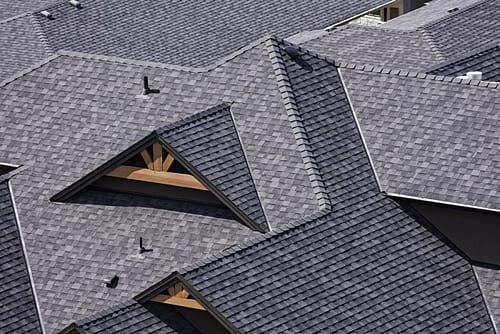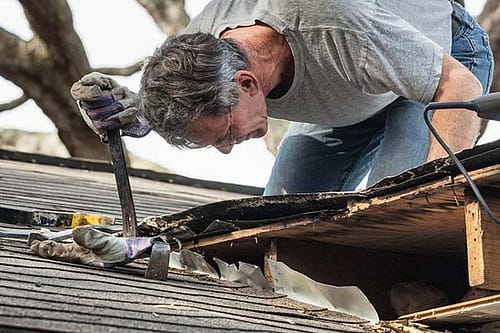Roofing is a protective layer that you apply to the flat or slightly sloping roof of your house. You do this to make the roof watertight and also to protect the roof against sun, wind, rain, hail, and snow and other external influences. Furthermore, the roof covering must have a long service life, be lightweight and be non-flammable. Within the roofing market nowadays there is an increasing demand for plastic roofing material such as PVC.
Why would you opt for a plastic roofing material?
Nowadays people are opting more and more for the plastic roof covering. The major advantage of plastic roofing is the durability of the material and the fact that it is affordable. The roof covering does not have to be laid with a burner, as is the case with bitumen roofs, for example. The plastic roofing consists of roughly 2 types:
EPDM
EPDM (ethylene-propylene-diene-monomer) consists of synthetic rubber. It usually has a lifespan of at least 40 years. This roof covering is made of very strong material and is well UV resistant. The flexible material consists of one piece and is therefore easy to lay. EPDM can sometimes be applied on top of the existing roof covering.
PVC
PVC (Poly Vinyl Chloride) roof covering is currently the most used if a plastic roof is chosen. It offers good resistance to chemicals but is not resistant to organic solvents, such as in petroleum products such as bitumen or polystyrene. If PVC is applied to such an underlay, a separating layer must first be applied. For example, the PVC roof covering lasts for 25 to 30 years with a film thickness of 1.2 mm. If you opt for a film thickness of 1.5 mm, the roof can last up to 35 years.
Reasons for choosing a PVC plastic roofing material
The PVC roof covering is nowadays popular and is mainly used on flat or slightly sloping roofs. PVC is a flexible material that fits well. Moreover, it has the property that it can contract and expand in the event of temperature fluctuations. Important in our changing climate. Because the material is lightweight, it does not burden the roof unnecessarily. In addition, it is extremely strong. With the pleasant feature of long service life.
Consider the good affordability, low maintenance and the environmentally friendly aspect that will appeal to many people. But also the option for a white PVC roof, for example, that offers major benefits for the climate in the home. There are also translucent PVC roofing sheets. You can often use this on outbuildings, such as a conservatory, a veranda or a carport.
The advantages of a PVC roof:
- A good affordable roofing material, fairly cheap compared to other alternatives.
- Easy to maintain, cleaning it twice a year with water is enough.
- It is very strong yet light in weight and therefore easy to process.
- Environmentally friendly material, because it is fully recyclable.
- Well UV-resistant, reflects the sunlight and thus ensures a pleasant living environment in the home.
- It is not installed with a burner and is completely fire safe.
- Optimally waterproof.
- It does not allow root growth, so it is ideal for ‘green roofs’.
- It is available in many colors, matching your facade, light colors are heat-insulating and the roof looks modern.
The disadvantages of a PVC roof:
- It lasts a little less than an EPDM roofing.
- Installing a PVC roof is more labor-intensive. Let this be done by the authorized roofer.
- The flexibility of the material decreases slightly during the lifetime.
How is a PVC roof installed?
Installing a PVC roof is not an easy task. It requires knowledge and experience. You attach the roof covering to the roof by using glue in combination with very hot air from a kind of hairdryer. This way the material can attach itself to the roof. Additional strips are attached mechanically to the raised edges so that the film does not peel off in the corners, around feed-through openings, and at raised edges. This makes the roof less susceptible to cracking.
Due to the use of hot air, there is no fire hazard during construction, as is the case with other types. You can easily cut the PVC rolls to size and measure them so that they overlap each other by at least 10 cm. Otherwise, the roof is not sufficiently watertight. Ultimately, you make the seams even more watertight with liquid PVC.
What are the costs of plastic roofing material?
The price always plays a role in the choice of roofing material. However, it is not possible to estimate in advance what exactly the installation of plastic roofing will cost. Why not? Because the price depends on a large number of factors. First, it is about the type that you choose. In addition, the surface area of the roof is also important. This has its effect on the number of hours that you work on your roof. Is it urgent? Then this can also ensure that the price is higher than you might expect.




